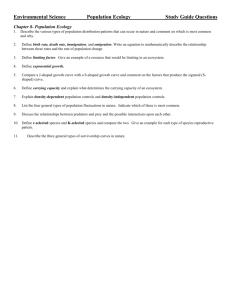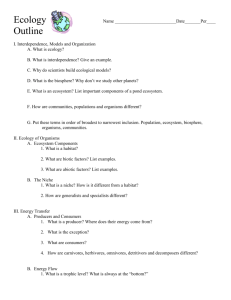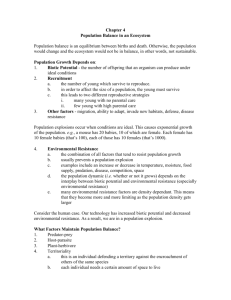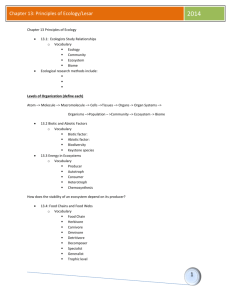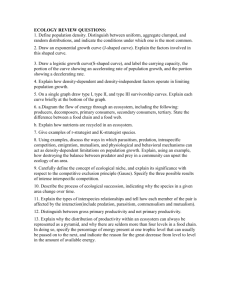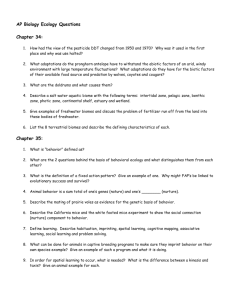Unit 6 Ecology Study Guide Behavioral ecology: study of interaction
advertisement
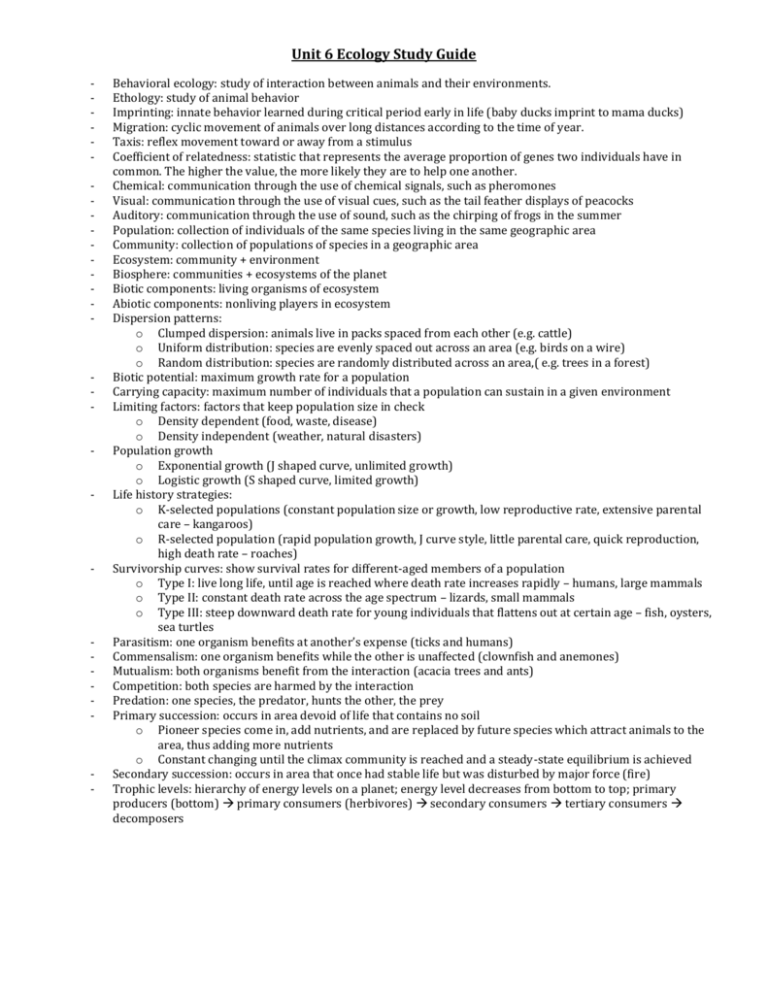
Unit 6 Ecology Study Guide - - - - - Behavioral ecology: study of interaction between animals and their environments. Ethology: study of animal behavior Imprinting: innate behavior learned during critical period early in life (baby ducks imprint to mama ducks) Migration: cyclic movement of animals over long distances according to the time of year. Taxis: reflex movement toward or away from a stimulus Coefficient of relatedness: statistic that represents the average proportion of genes two individuals have in common. The higher the value, the more likely they are to help one another. Chemical: communication through the use of chemical signals, such as pheromones Visual: communication through the use of visual cues, such as the tail feather displays of peacocks Auditory: communication through the use of sound, such as the chirping of frogs in the summer Population: collection of individuals of the same species living in the same geographic area Community: collection of populations of species in a geographic area Ecosystem: community + environment Biosphere: communities + ecosystems of the planet Biotic components: living organisms of ecosystem Abiotic components: nonliving players in ecosystem Dispersion patterns: o Clumped dispersion: animals live in packs spaced from each other (e.g. cattle) o Uniform distribution: species are evenly spaced out across an area (e.g. birds on a wire) o Random distribution: species are randomly distributed across an area,( e.g. trees in a forest) Biotic potential: maximum growth rate for a population Carrying capacity: maximum number of individuals that a population can sustain in a given environment Limiting factors: factors that keep population size in check o Density dependent (food, waste, disease) o Density independent (weather, natural disasters) Population growth o Exponential growth (J shaped curve, unlimited growth) o Logistic growth (S shaped curve, limited growth) Life history strategies: o K-selected populations (constant population size or growth, low reproductive rate, extensive parental care – kangaroos) o R-selected population (rapid population growth, J curve style, little parental care, quick reproduction, high death rate – roaches) Survivorship curves: show survival rates for different-aged members of a population o Type I: live long life, until age is reached where death rate increases rapidly – humans, large mammals o Type II: constant death rate across the age spectrum – lizards, small mammals o Type III: steep downward death rate for young individuals that flattens out at certain age – fish, oysters, sea turtles Parasitism: one organism benefits at another’s expense (ticks and humans) Commensalism: one organism benefits while the other is unaffected (clownfish and anemones) Mutualism: both organisms benefit from the interaction (acacia trees and ants) Competition: both species are harmed by the interaction Predation: one species, the predator, hunts the other, the prey Primary succession: occurs in area devoid of life that contains no soil o Pioneer species come in, add nutrients, and are replaced by future species which attract animals to the area, thus adding more nutrients o Constant changing until the climax community is reached and a steady-state equilibrium is achieved Secondary succession: occurs in area that once had stable life but was disturbed by major force (fire) Trophic levels: hierarchy of energy levels on a planet; energy level decreases from bottom to top; primary producers (bottom) primary consumers (herbivores) secondary consumers tertiary consumers decomposers
